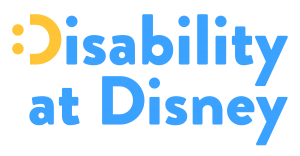|
Getting your Trinity Audio player ready...
|
Visiting Walt Disney World is a dream come true for kids and parents alike, but many parents (or caregivers) with children on the autism spectrum or that have other cognitive disabilities might be overwhelmed by the breadth and complexity of a Walt Disney World vacation – as many other groups of first-time guests are. While we’re working on compiling complete guides to visiting “the World” for guests with various disabilities we wanted to share some tips that may be helpful in the meantime.
How to Prepare
Plan a Visual Schedule
By providing a possible timeline, you can help the Guest with a cognitive disability understand what to expect—such as crowds, sights, sounds and smells—and so that he or she can learn the routine.
Watch Videos
Rather than waiting until you arrive at the parks, help the Guest with a cognitive disability prepare for the experience by having him or her watch videos about the Walt Disney World Resort, from this site or others.
Each park features its own video tour, which includes certain attractions, as well as many of the Cast Members and Disney Characters your party will likely encounter during your visit.
Study Location Maps
Comprehensive maps and guides are available for all 4 theme parks, as well as the 2 water parks. Review the maps with the Guest with a cognitive disability and try to lay out a plan for your day at the park.
Choose a Meeting Location
Pick a place on the map to meet in case your party becomes separated. Be sure the Guest with a cognitive disability is aware of the location and show it to them as soon as you arrive in the park.
Should he or she get lost, stress the importance to the Guest with a cognitive disability of finding a Cast Member who will assist in attempting to reunite you. In addition, there are also designated locations in each park where lost persons can be escorted.
It is recommended that you take a photo of the Guest with a cognitive disability on your mobile device or digital camera, especially if he or she has a tendency to wander off. You may also consider making a nametag that includes his or her name, as well as your name and mobile phone number.
Practice Waiting in Line
Waiting in line is a regular part of the Walt Disney World Resort experience. To prepare, practice waiting with the Guest with a cognitive disability at home or in lines at places he or she might already frequent.
What to Bring
Being prepared for a day at Walt Disney World Resort goes beyond the parks. Plan ahead by bringing along an assortment of items.
Some suggestions include:
- A Safety Bracelet or Nametag
- Ear Plugs or Headphones
- A Favorite Device or Activity
- Reinforcers for Good Behavior
- A Sensory Toy
A Safety Bracelet or Nametag
Place a bracelet, nametag or some variety of visual identification onto the Guest with a cognitive disability. Include his or her name, a reference to the specific cognitive disability, all important medical information and anything else that should be known. Please include your name and contact number as well.
Ear Plugs or Headphones
The theme parks can be very noisy, including fireworks, announcements on loud speakers and other Guests’ voices. Ear plugs or headphones may contribute toward a less intense experience for the Guest with a cognitive disability.
A Favorite Device or Activity
To keep the Guest with a cognitive disability occupied while waiting in a line, it is suggested you bring along a computer tablet or mobile device, video game, or anything else constructive you feel might distract their attention.
Reinforcers for Good Behavior
A trip to the theme parks at Walt Disney World Resort can be very long. Help promote a full day of fun for the Guest with a cognitive disability by keeping motivational items handy to reinforce his or her good behavior.
A Sensory Toy
Keeping the Guest with a cognitive disability calm might be an issue due to the sights, sounds, scents and commotion at any one of the parks. Have a sensory toy on hand—like a stress ball or other calming item—to help prevent or assist him or her from experiencing sensory overload.
We’re also building a vibrant community on Facebook for Disney fans of all abilities, where you can go to ask questions, share insights, and talk Disney. Click the button below to join,






This is so so helpful and informative. Thank you